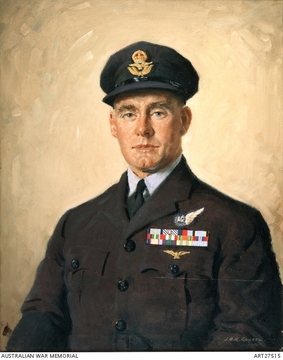WILLIAMS, Norman Francis
| Service Number: | O36346 |
|---|---|
| Enlisted: | 24 May 1941 |
| Last Rank: | Flight Lieutenant |
| Last Unit: | Not yet discovered |
| Born: | Leeton, New South Wales, Australia, 3 November 1914 |
| Home Town: | Leeton, Leeton, New South Wales |
| Schooling: | Not yet discovered |
| Occupation: | Not yet discovered |
| Died: | Natural Causes, Barham, New South Wales, Australia, 30 June 2007, aged 92 years |
| Cemetery: |
Barham Cemetery, Moulamein Road, New South Wales, Australia |
| Memorials: |
World War 2 Service
| 24 May 1941: | Enlisted Royal Australian Air Force, Flight Lieutenant, O36346 | |
|---|---|---|
| 18 May 1943: | Honoured Distinguished Flying Medal and Bar, DFM awarded on the 24th of November 1942 | |
| 6 Jul 1943: | Honoured Conspicuous Gallantry Medal | |
| 4 May 1948: | Discharged Royal Australian Air Force, Flight Lieutenant, O36346 |
Korean War Service
| 9 Jun 1953: | Involvement Royal Australian Air Force, Flight Lieutenant, O36346 |
|---|
Help us honour Norman Francis Williams's service by contributing information, stories, and images so that they can be preserved for future generations.
Add my storyBiography contributed
Norman Francis Williams, RAAF (Service no. 411624). Williams was the most highly decorated NCO of the Second World War and was the only 'non-pilot air ace'. Norman Williams was wounded twice, once seriously when he was sitting behind the turret door of a Halifax. He also served in the Pacific and in Korea. His awards include the Conspicuous Gallantry Medal and the Distinguished Flying Medal and Bar.
The Citation for the first DFM read "One night in September, 1942, this airman was the rear gunner of an aircraft which attacked Bremen. On the homeward flight, the aircraft was intercepted by a Junkers 88 whose pilot maneuvered to attack from the rear. By his skilful evading directions, Sergeant Williams enabled his captain to keep the attacker at bay and, when the opportunity occurred, delivered a devastating burst which caused the enemy aircraft to burst into flames and dive steeply towards the ground. Throughout the engagement, this airman displayed exceptional skill and resource, setting an example which inspired his colleagues."
The CGM Citation read: "One night in June, 1943, this airman was the rear gunner of an aircraft detailed to attack Dusseldorf. During the operation, the bomber was intercepted by 2 enemy fighters. In the first encounter, Flight Sergeant Williams' turret was rendered unserviceable, while he sustained several bullet wounds in the legs and body. Nevertheless, when the second fighter attacked, Flight Sergeant Williams skillfully gave his captain directions which enabled the fighter to be evaded. Flight Sergeant Williams then delivered an accurate burst of fire which caused the enemy aircraft to explode in the air. The first fighter resumed the attack but, although in considerable pain, with both legs partially paralysed, Flight Sergeant Williams with a well placed burst of fire from close range, shot the enemy aircraft down. Making light of his injuries he remained in his damaged turret until a landing was effected when his turret had to be cut away before he could be extricated. By his great skill, courage and determination, this airman contributed in a large measure to the safe return of the bomber and its crew."
He returned to Australia in April 1944. Refusing to go into a training position, he requested an active operational posting as a gunner on RAAF B-24 Liberator aircraft in No 23 Squadron based in Northern Australia and Morotai. Demobilised in 1948, he rejoined the RAAF as an air traffic controller in 1951 serving in the Malayan Conflict and the Korean War before resigning as a Temporary SQNLDR in 1954.
He passed away in 2007 as one of only 11 RAAF airmen to be awarded the CGM and only RAAF airmen to be awarded the CGM and DFM and Bar.










